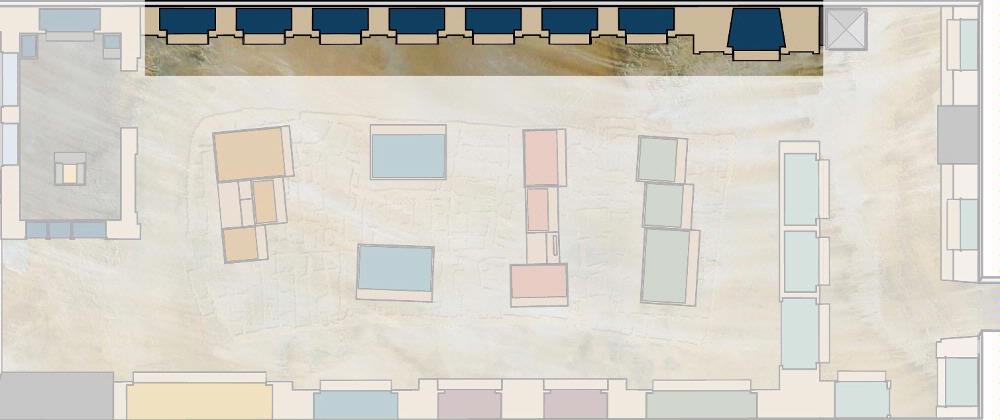| Typ <itemType> |
Utställning |
| Description <itemDescription> |
-
The Egyptian king was the link between the worlds of the people and of the gods. He was the falcon god Horus and his office was divine. The ideology of kingship, - the notion of the king’s role - was fundamental to how the Egyptians perceived their world and society. This gave the Egyptian state legitimacy and stability.
It was the responsibility of the king to maintain Maat,the divine order and...
Visa hela
The Egyptian king was the link between the worlds of the people and of the gods. He was the falcon god Horus and his office was divine. The ideology of kingship, - the notion of the king’s role - was fundamental to how the Egyptians perceived their world and society. This gave the Egyptian state legitimacy and stability.
It was the responsibility of the king to maintain Maat,the divine order and balance. This, he did by driving out the enemy. On a more symbolic level they were represented by the neighbouring people, who the king was often illustrated as bunching together and slaying. Tales of victories and great deeds maintained the image of the king as the defender of creation.
The temple cult was also the responsibility of the king. Only he was allowed to meet the gods face to face. The king is often seen kneeling before the god, handing over a small image of the goddess Maat.
Stäng
|
| Description, Swedish <itemDescription> |
-
Den egyptiske kungen var länken mellan människornas och gudarnas världar. Han var falkguden Horus och hans ämbete var gudomligt. Kungaideologin – föreställningen om kungens roll – var grundläggande fö...
Visa hela
Den egyptiske kungen var länken mellan människornas och gudarnas världar. Han var falkguden Horus och hans ämbete var gudomligt. Kungaideologin – föreställningen om kungens roll – var grundläggande för hur egyptierna förklarade världen och samhället. Den gav staten legitimitet och stabilitet.
Det var kungens ansvar att upprätthålla Maat, den gudomliga ordningen och balansen. Det gjorde han genom att fördriva fiender. På ett symboliskt plan representerades de av grannfolk, som kungen ofta avbildades i färd med att bunta ihop och slå ihjäl. Berättelser om segrar och stordåd upprätthöll bilden av kungen som skapelsens försvarare.
Kulten i templen var också kungens uppgift. Endast han fick möta gudarna ansikte mot ansikte. Ofta avbildas kungen på knä inför guden, överräckande en liten bild av gudinnan Maat.
Stäng
|
| Nyckelord <itemKeyWord> |
|
| Alternative Name<itemName> |
- New Egypt Room 4C MK The Kingdom
|
| Title<itemName> |
- The Kingdom
|
| Exhibition, Part of<itemName> |
- New Egypt, 4, The Kingdom
|
| Title, Swedish<itemName> |
- Faraonernas tid
|
| Ämne <subject> |
|
| Diary number <itemNumber> |
|
| Egypt, Number in Exhibition <itemNumber> |
|
| Previous ID <itemNumber> |
|
| Rättigheter för metadata <itemLicense> |

|
| Källa <presOrganization> |
Statens museer för världskultur - Medelhavsmuseet |
|
Källa <url>
|
|


 ARTIKLAR I WIKIPEDIA
ARTIKLAR I WIKIPEDIA ARTIKLAR I WIKIDATA
ARTIKLAR I WIKIDATA BILDER I WIKIMEDIA COMMONS
BILDER I WIKIMEDIA COMMONS












